
With the ongoing work on the cherry picker (foldable, or not), and I certainly don't have room (or loose change)for a rolling gantry, either.
What to do? How 'bout I install an overhead beam in the garage to support a hoist? Splendid idea, old chap!
I initially looked at steel I-beams, but I relatively quickly decided that even if I could get on ecut to the correctl ength and delivered to my house, there was likely no way in heck I'd beable to mount it up above my head without having... Yeah, a winch. Kind of a chicken and egg problem, huh?
I did a little more research, and talked to some mechanical eningeers about it, and we quickly got in to discussions about moments of inertia, Modulus of this, that, or the other, and I rapidly got lost. So, how about a wooden beam, then? A reasonably-sized one should be strong enough for the job, right?
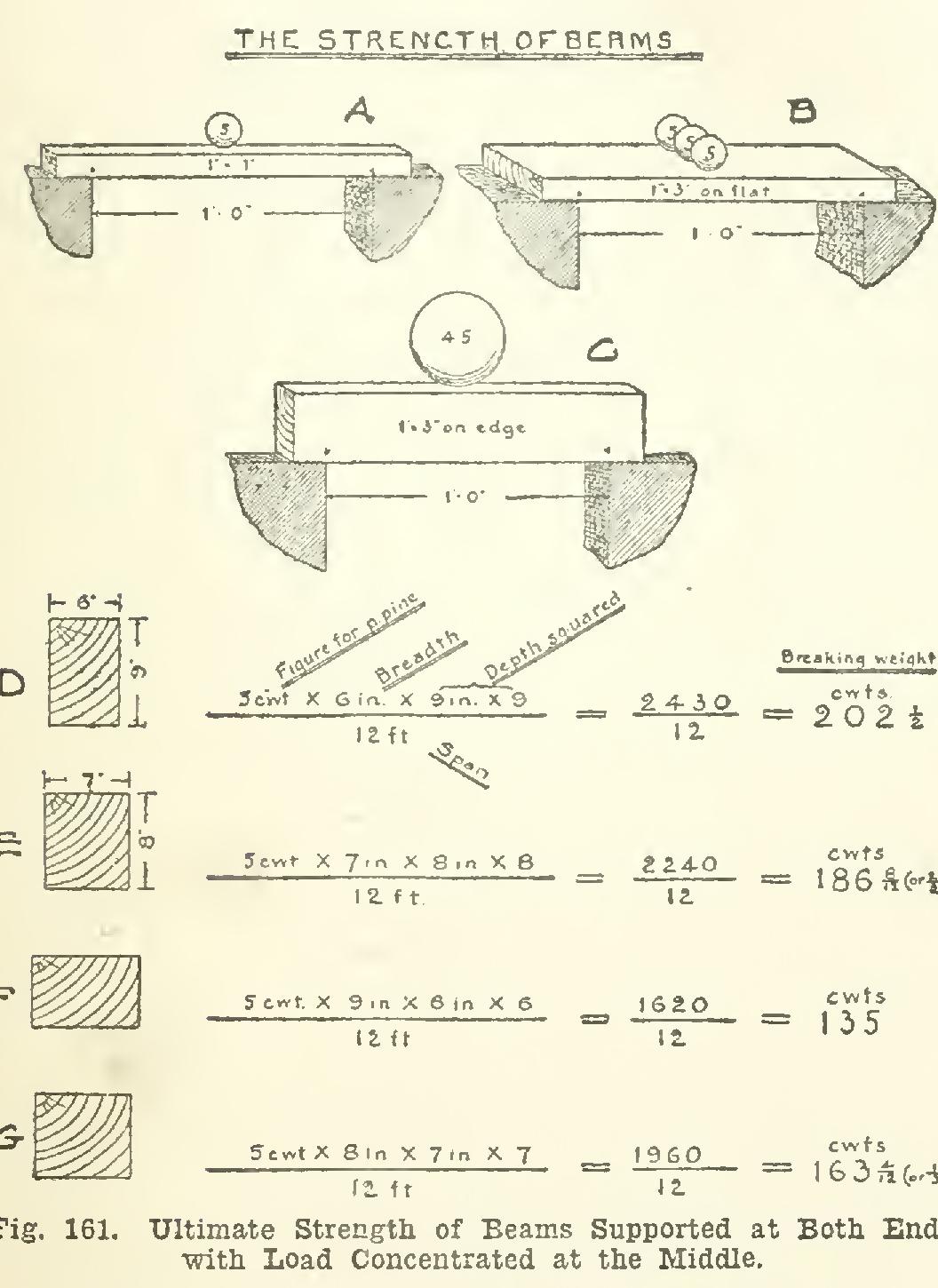 here. It's an excerpt out of this book, Framing, which is about carpentry, etc., and doing it yourself. It was published in 1909, and the copyright has expired, so feel free to grab yourself a copy. The book is written for the lay person, so even idiots such as myself can understand it.
here. It's an excerpt out of this book, Framing, which is about carpentry, etc., and doing it yourself. It was published in 1909, and the copyright has expired, so feel free to grab yourself a copy. The book is written for the lay person, so even idiots such as myself can understand it.
The biggest problem, then, was using the information from that book to figure out how much load a beam of a given size could carry. I initially researched the posts for my uprights, and found that a standard 4x4 upright post can carry a compressive load (along the grain) of about 5,000 lbs. More than enough, considering the whole truck weighs in at about 2,000 lbs. The idea, then, is to put a post on either side of the garage for support, and then to lay a beam across to hold the winch. Of course, the metal I-beam is what I really want, so I can move the winch out of the way, but with the system I came up with, I'll just take it down when I'm finished using it, I guess.
After I figured out that the 4x4 posts were sufficient, I went on a search for the strength of lumber, in CWTs (per the book). Problem is, that I can't find any technical secifications for the Pine lumber that I would be buying at my local hardware store. I started searching the internet, and I finally found a web site where they tested various lumber. That site's results seemed to correlate nicely to the book's statement that the pine might have a strength of 4cwt. I did some more research, and found that the worst case Pine I could find was "White Pine," which has a strength of about 3cwt...
From all this, I created an Excel spreadsheet - a really simple one. It has a lookup table for standard US lumber sizes (e.g. a 2x4 is really a 1.5" x 3.5"), and a simple "if" for differentiating between a "live" and a "dead" load. (A live load is onein which the stresses are changing, and a dead load is stationary.. For instance, an engine hanging stationary from the beam would be a "dead" load. Pulling the engine out of the truck using a come-along would be a "live" load.) The big difference between the two types of loads is the factor of safety. For a live load, the book recommends the beam be eight- to ten times (!) stronger than what you really need. For a "dead" load, the recommendation is four- to five times stronger.
That all said, here is my spreadsheet. It is for informational purposes, only. If you use it to design/build something, and you get hurt because it breaks, well them's the breaks - it's all your own damned fault, for listening to some idiot on the internet. Capice? So, the final answer is that two 2x12's (on end) will support about a one thousand pound "live" load. Since the whole truck weighs in around 2,000 lbs, I expect this is more than enough to pull the engine or the body with plenty of safety margins.
So, let's get to the implementation, right? How did I put this all together? Well, first off, I had to pull down the pegboard I used to have on one of my walls. That side of the garage has a footer under it that creates a ledge about two feet above the floor. That's no big deal, it just amounted to cutting my 4x4 uprights to different lengths.

There was some brain power involved in setting the posts up, though. I thunk about it long and hard (neat trick, huh?)... So, it's important to make sure the posts can't bend or twist - the load must be kept staight up & down all the time, or the post can rupture (danger, WIll Robinson!). My first thought was just to use lag bolts to bolt the posts directly to the studs in the wall. After thinking about that, though, I didn't want the bolts to weaken the posts, as I didn't know what the overall effect would be. Also, on the side with the pegboard, I wanted to remount the old pegboard, and I thought it might be a bit easier if the posts stood off the wall just a skosh.
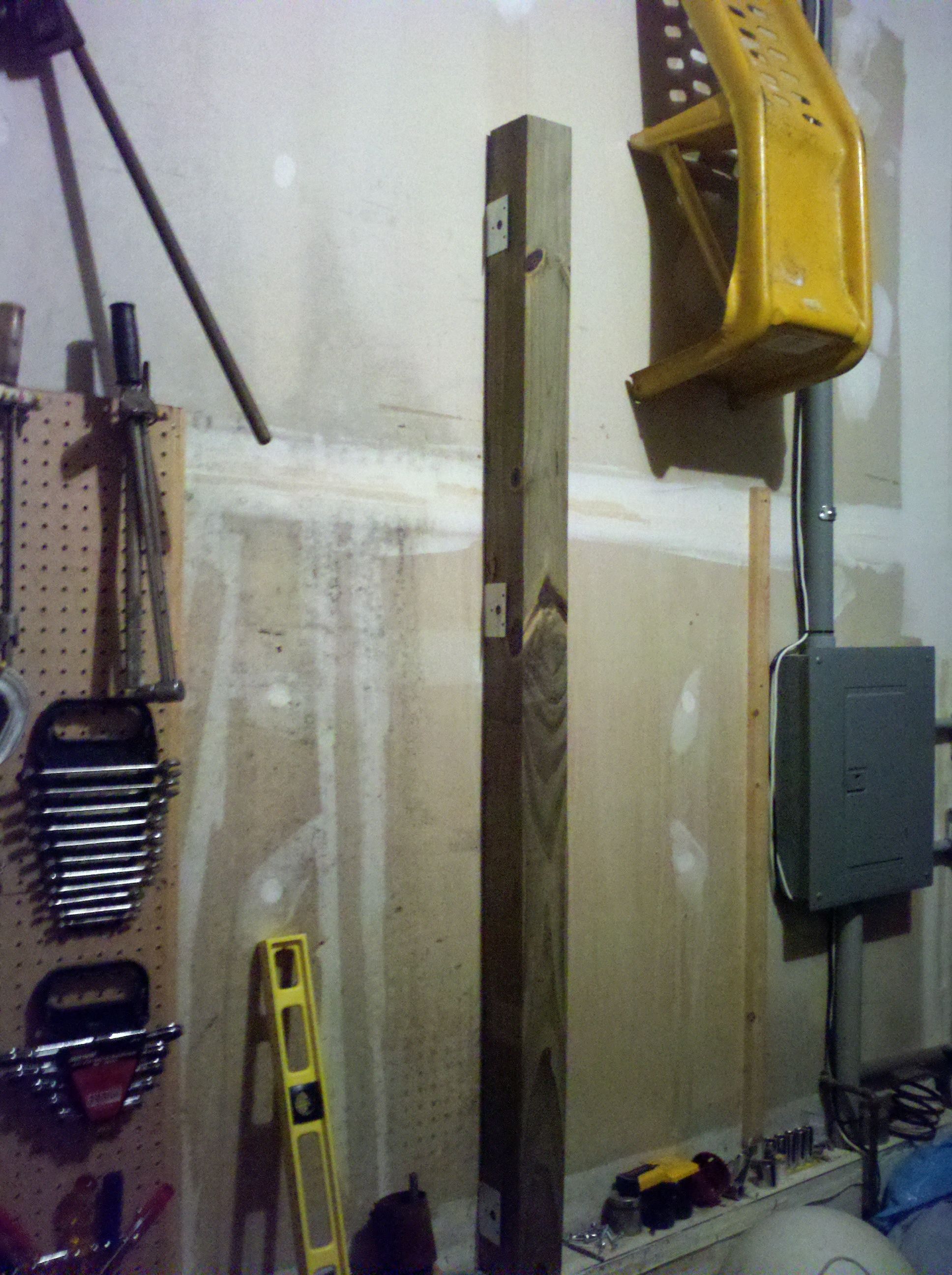
I decided, then, to use "connectors." Generally, you'd uses these to bolt a post to a floor, but I instead ran lag bolts through these to hold them to the wall. The post then sits a lag bolt head's distance off the wall allowing me to get clever behind the post - which is necessary, since that's where the beam is... I got some 1/8" metal brackets and drilled them so I could hang them from the wall, and also runs screws through them to support the peg board. These brackets sit right on top of the beam ties for some added support.
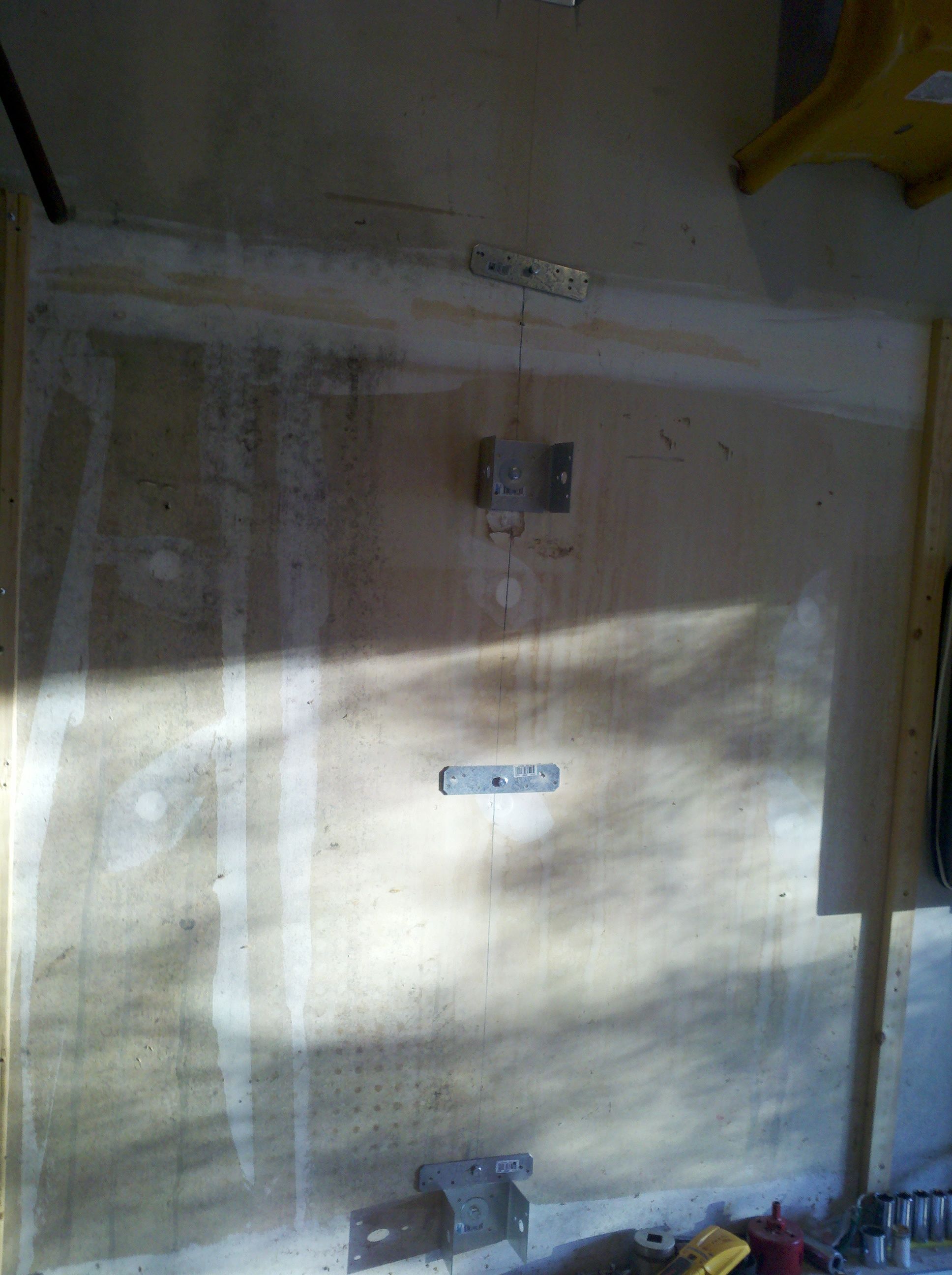
I also added ties to the top of the posts to hold the 2x12's in place.

The other side of the garage had a very similar installation, but without the pegboard. I did, however, have to pull down a hanger board (where I keep a shovel, a hedge trimmer, and some other junk) - this got moved to the other side of the garage.
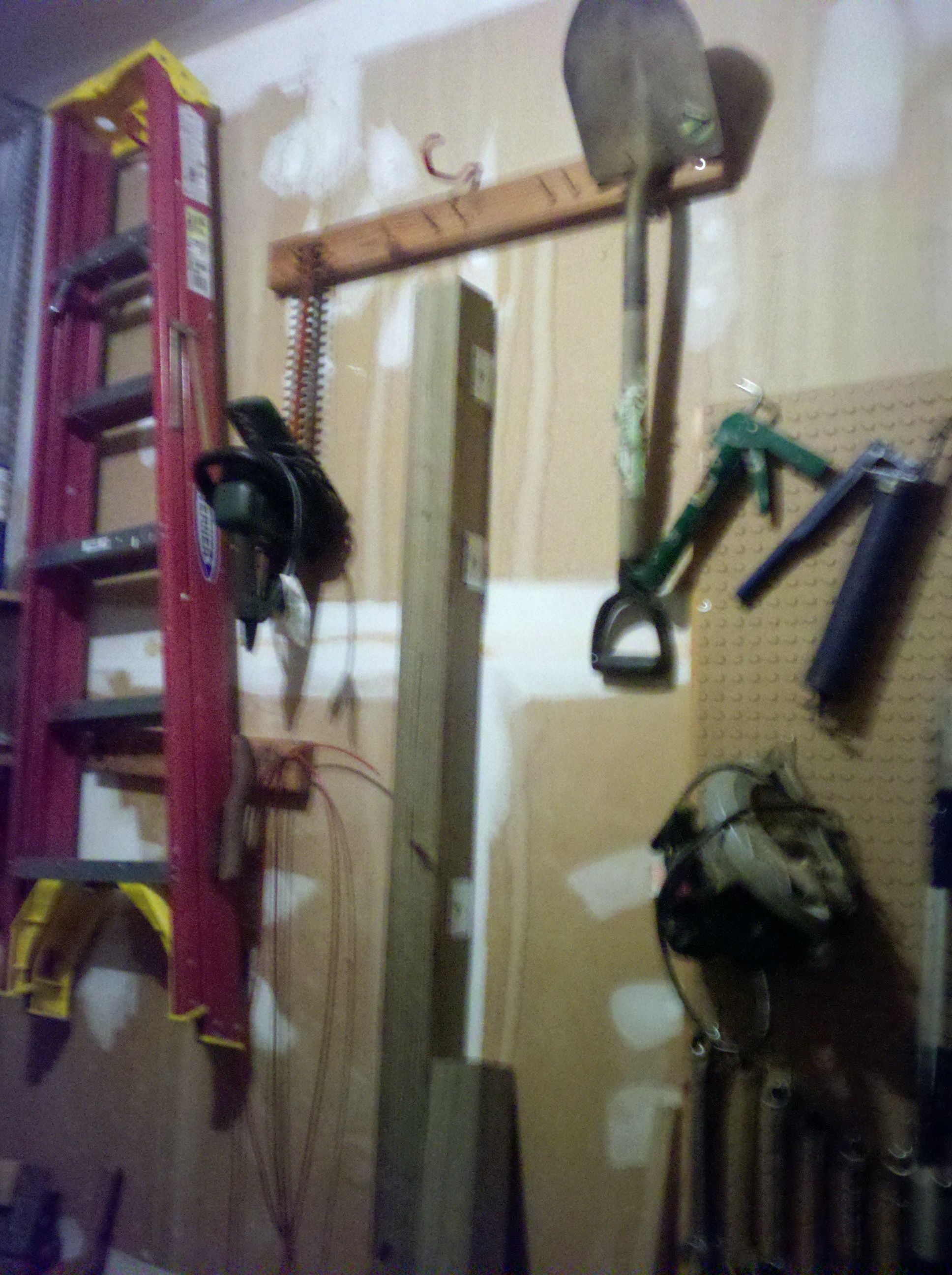
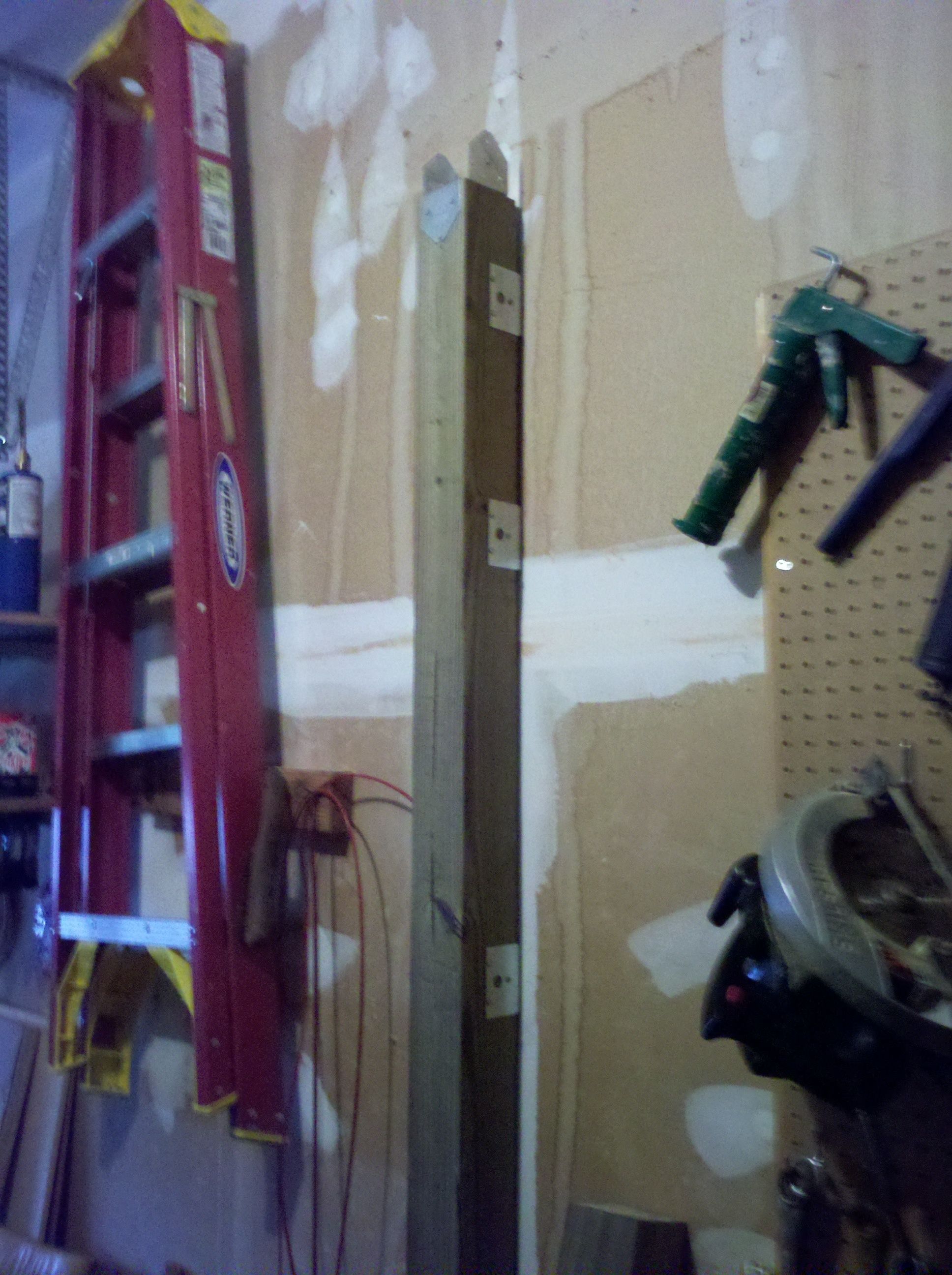
About ten inches up from the 4x4s, I put another tie. This tie is meant to keep the winch load from causing the beam to twist, or even fall off. You'll see in a few more pictures, how the 2x12s tie in to both the wall and the post. I had originally planned on using screws to connect the ties to the posts/beam, but the holes were too close to the wall. Instead, I used nails.
I cut the 2x12s to the appropriate length (actually closer to ten feet). I set the first 2x12 up on the posts using my big muscles *rolls eyes* and a ladder. I did not fall off and break myself, although it was a near thing a couple of times...
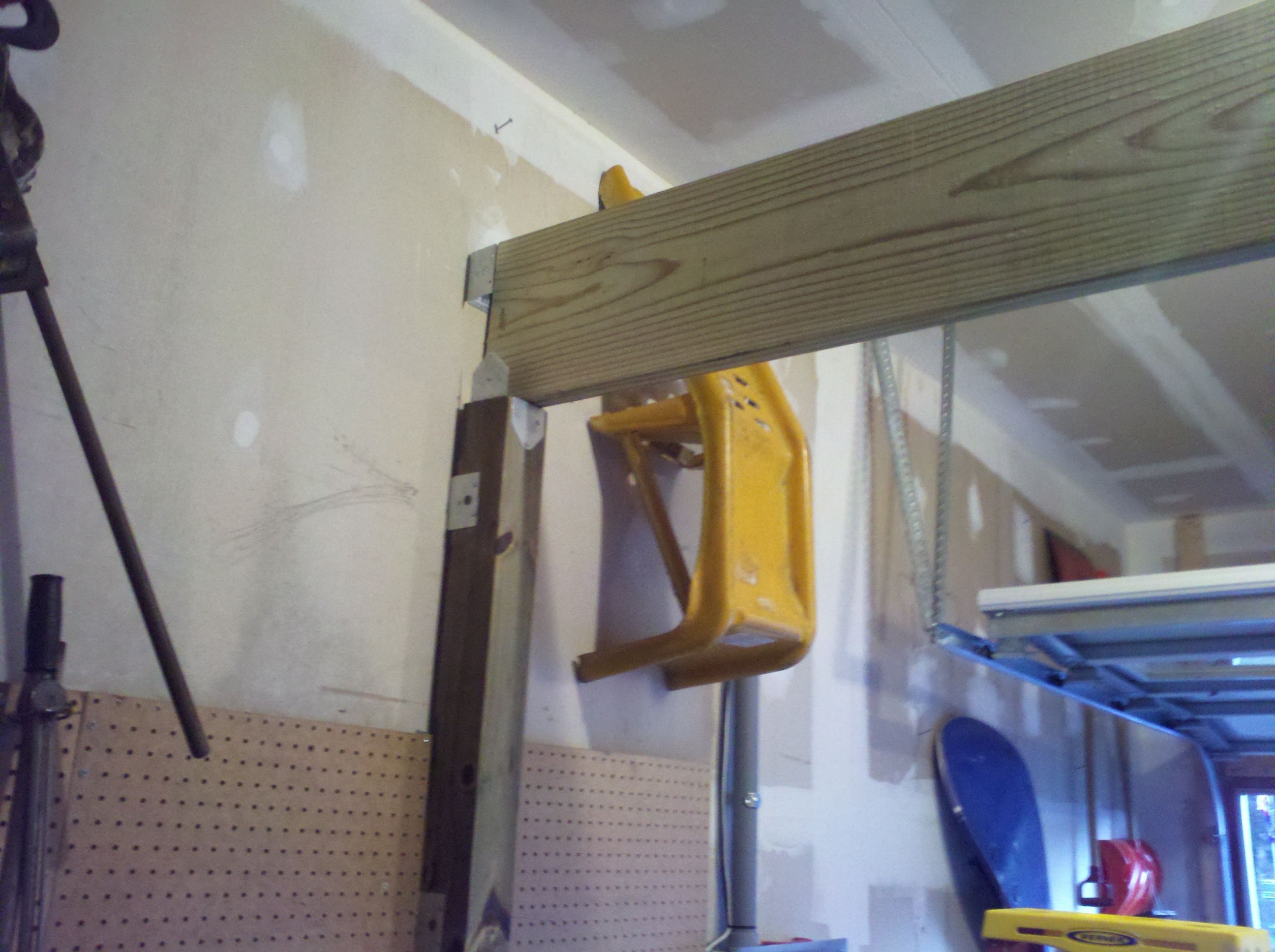
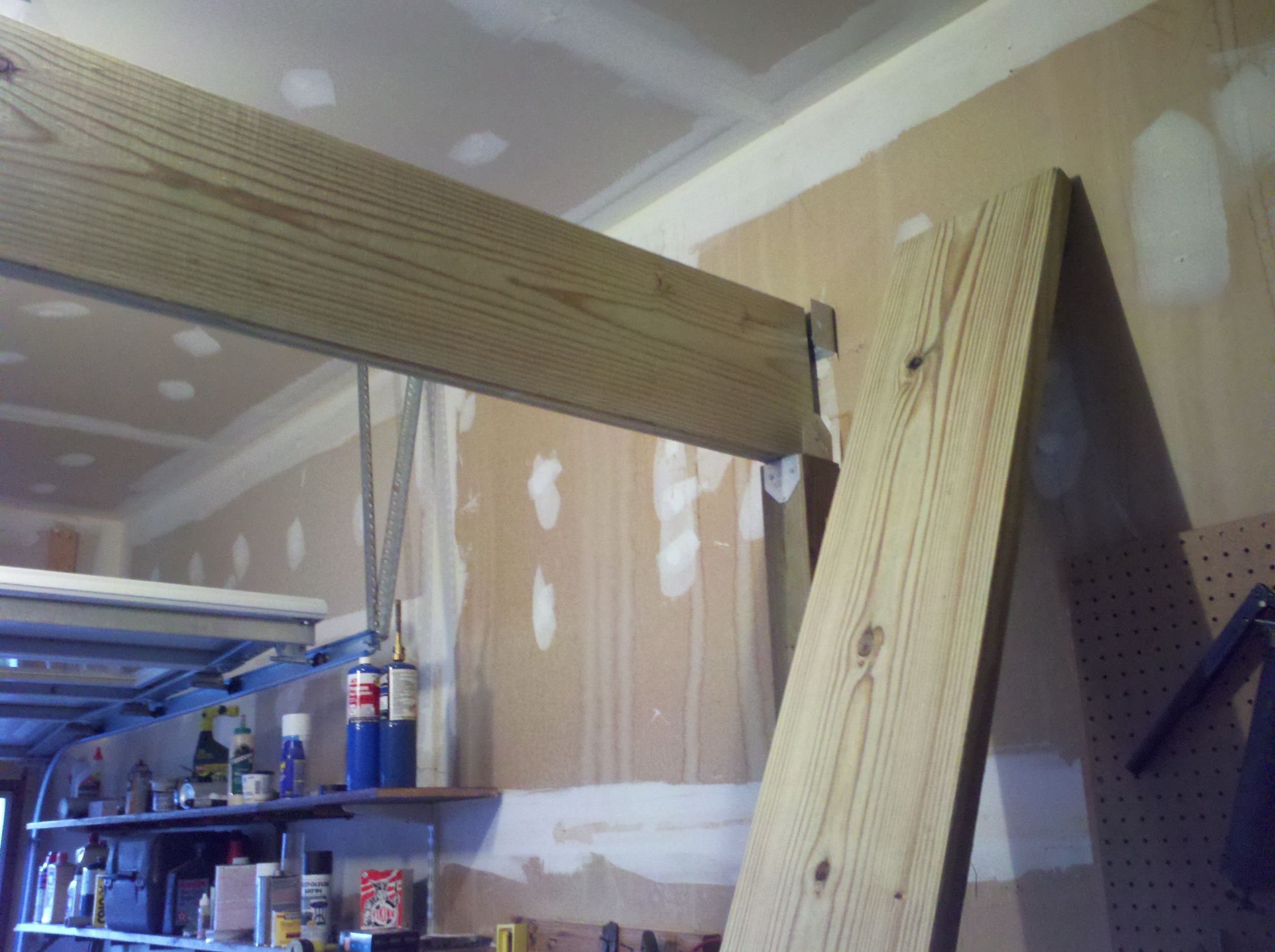
After the first board was up, I used a tube of construction adhesive to tie the two boards together. When this stuff dries, this will effectively be just one beam. After I applied the glue, I dropped in the second 2x12. This is the point where I nearly killed myself, as the clearance was much less, and wood hates me. That's just the way it is, but I made it out mostly unscathed (although my back wasn't real happy with me the next morning...). The boards aren't perfectly flat, so I used some more ties to hold them together. This will make sure the glue makes a good bond...
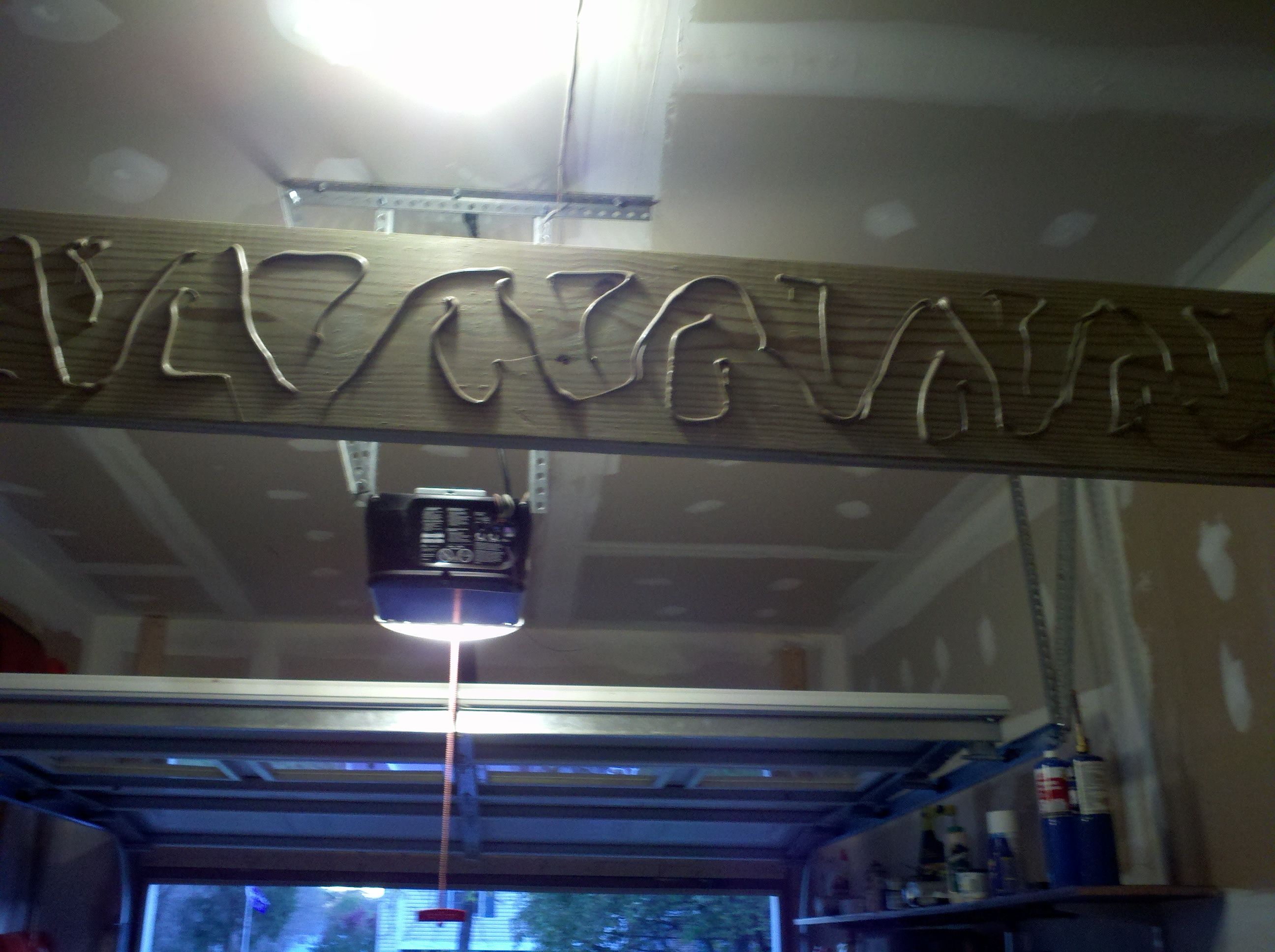
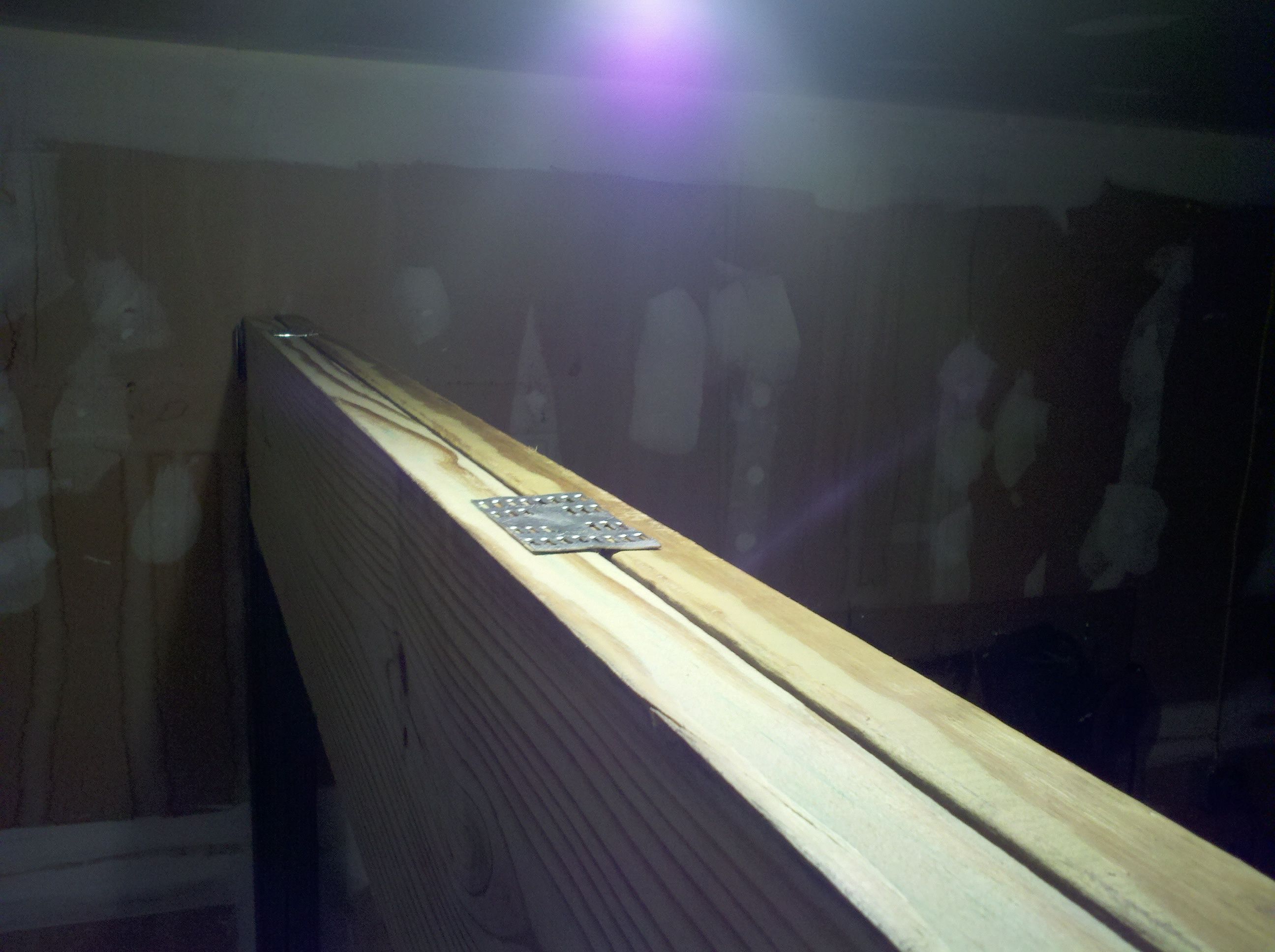
After the ties were beaten in, and all the nails put in, It was getting dark. But hey, now I have a beam to use for a winch! This will be useful throughout this project, and maybe others... Total cost was ~$200
Last modified on 11/20/11